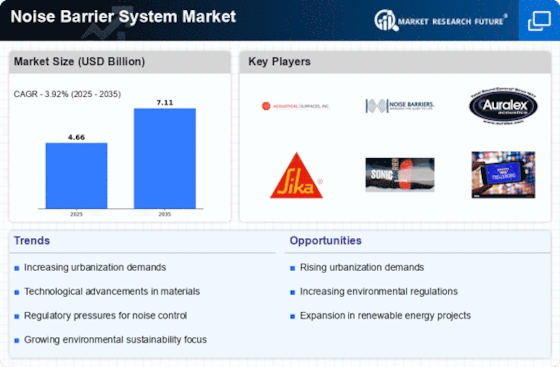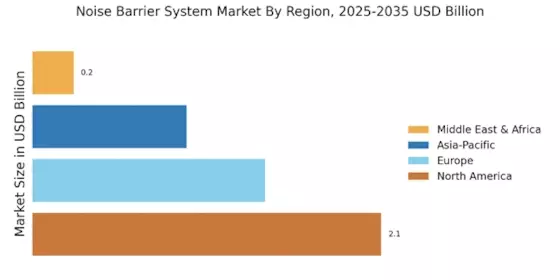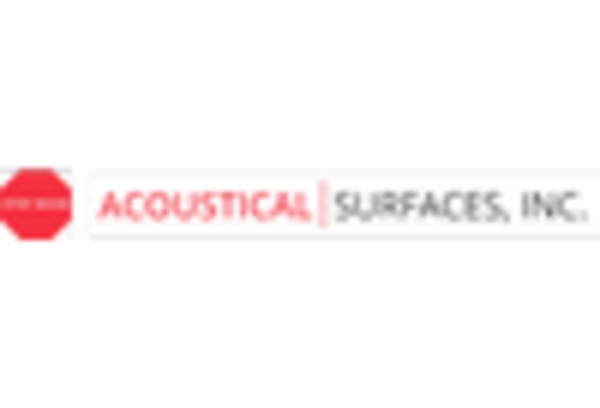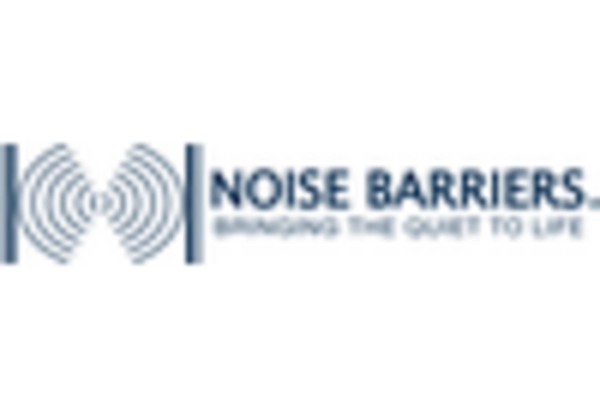Environmental Awareness and Sustainability
Growing environmental awareness and a shift towards sustainability are influencing the Noise Barrier System Market. As communities become more conscious of the impact of noise pollution on health and well-being, there is a rising demand for eco-friendly noise barrier solutions. Manufacturers are increasingly adopting sustainable materials and practices in the production of noise barriers, aligning with the global push for greener construction methods. This trend is further supported by government initiatives promoting sustainable urban development. The market for noise barriers made from recycled materials is expected to witness significant growth, as stakeholders seek to minimize their environmental footprint. This shift not only addresses noise pollution but also contributes to broader sustainability goals, enhancing the appeal of noise barrier systems in various applications.
Technological Advancements in Noise Control
Technological advancements in noise control solutions are reshaping the Noise Barrier System Market. Innovations in materials and design are leading to more effective and aesthetically pleasing noise barriers. For instance, the integration of sound-absorbing materials and advanced engineering techniques has resulted in barriers that not only reduce noise levels but also blend seamlessly into their surroundings. The introduction of smart noise barriers, equipped with sensors and monitoring systems, is also gaining traction. These barriers can adapt to changing noise conditions, providing real-time data and enhancing their effectiveness. As technology continues to evolve, the market is likely to see increased investment in research and development, driving further innovation in noise barrier systems and expanding their applications across various sectors.
Urbanization and Infrastructure Development
The rapid pace of urbanization and infrastructure development appears to be a primary driver for the Noise Barrier System Market. As cities expand and populations increase, the demand for effective noise mitigation solutions becomes more pronounced. Urban areas often experience heightened noise levels due to traffic, construction, and industrial activities. Consequently, municipalities and developers are increasingly investing in noise barrier systems to enhance the quality of life for residents. According to recent data, the noise barrier market is projected to grow at a compound annual growth rate of approximately 5.2% over the next several years, reflecting the urgent need for noise control in densely populated regions. This trend indicates a robust market potential for noise barrier systems, as stakeholders prioritize noise reduction in urban planning.
Regulatory Frameworks and Noise Control Policies
The establishment of regulatory frameworks and noise control policies is a significant driver for the Noise Barrier System Market. Governments and local authorities are increasingly implementing stringent noise regulations to protect public health and welfare. These regulations often mandate the installation of noise barriers in specific areas, particularly near highways, railways, and industrial zones. Compliance with these regulations is essential for developers and construction companies, creating a steady demand for noise barrier systems. Furthermore, as urbanization continues to rise, the enforcement of noise control policies is expected to become more rigorous, further propelling market growth. The proactive approach taken by regulatory bodies indicates a long-term commitment to addressing noise pollution, thereby enhancing the market landscape for noise barrier systems.
Increased Investment in Transportation Infrastructure
Increased investment in transportation infrastructure is driving growth in the Noise Barrier System Market. Governments and private entities are allocating substantial resources to enhance transportation networks, including roads, highways, and railways. This expansion often leads to increased noise levels, necessitating the implementation of noise barrier systems to mitigate the impact on surrounding communities. Recent reports indicate that transportation infrastructure spending is projected to rise significantly, creating a favorable environment for noise barrier manufacturers. As new projects are initiated, the demand for effective noise control solutions will likely surge, presenting opportunities for innovation and market expansion. This trend underscores the critical role of noise barriers in ensuring that transportation developments do not compromise the quality of life for nearby residents.


















Leave a Comment